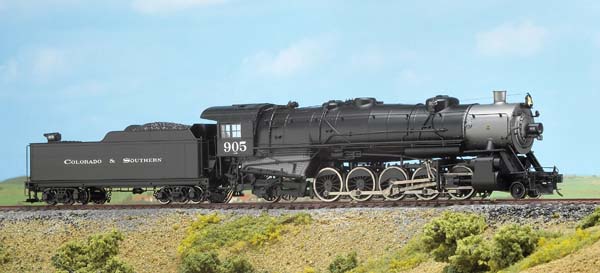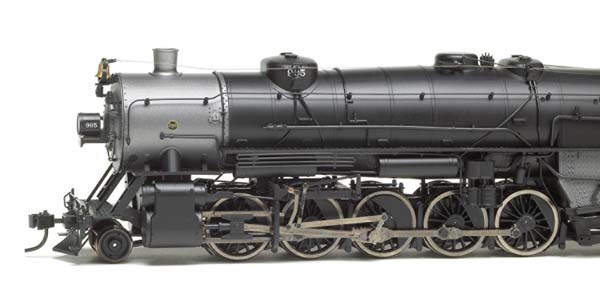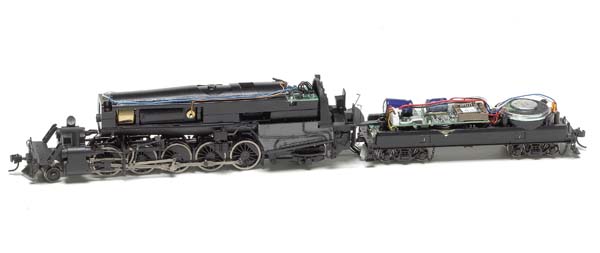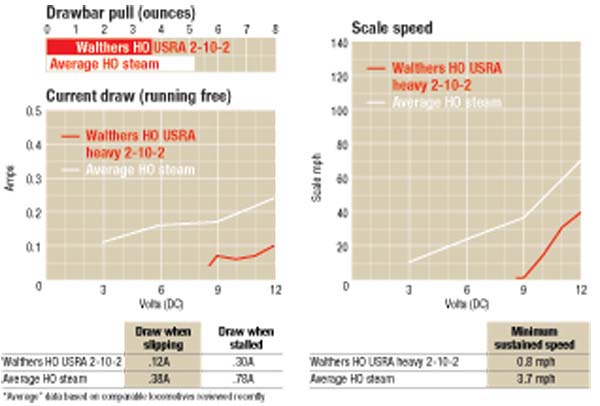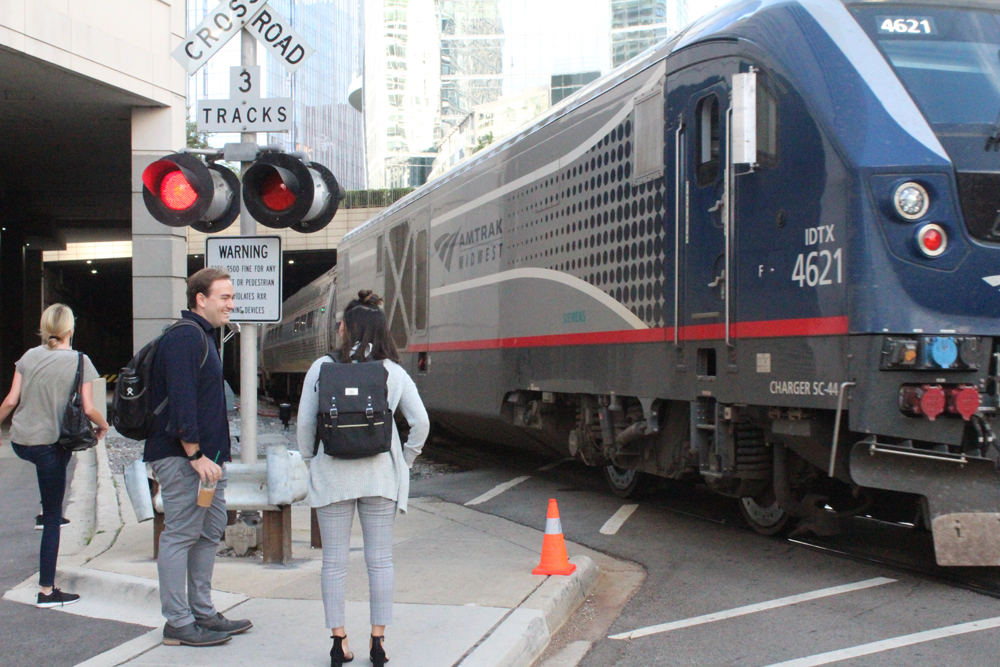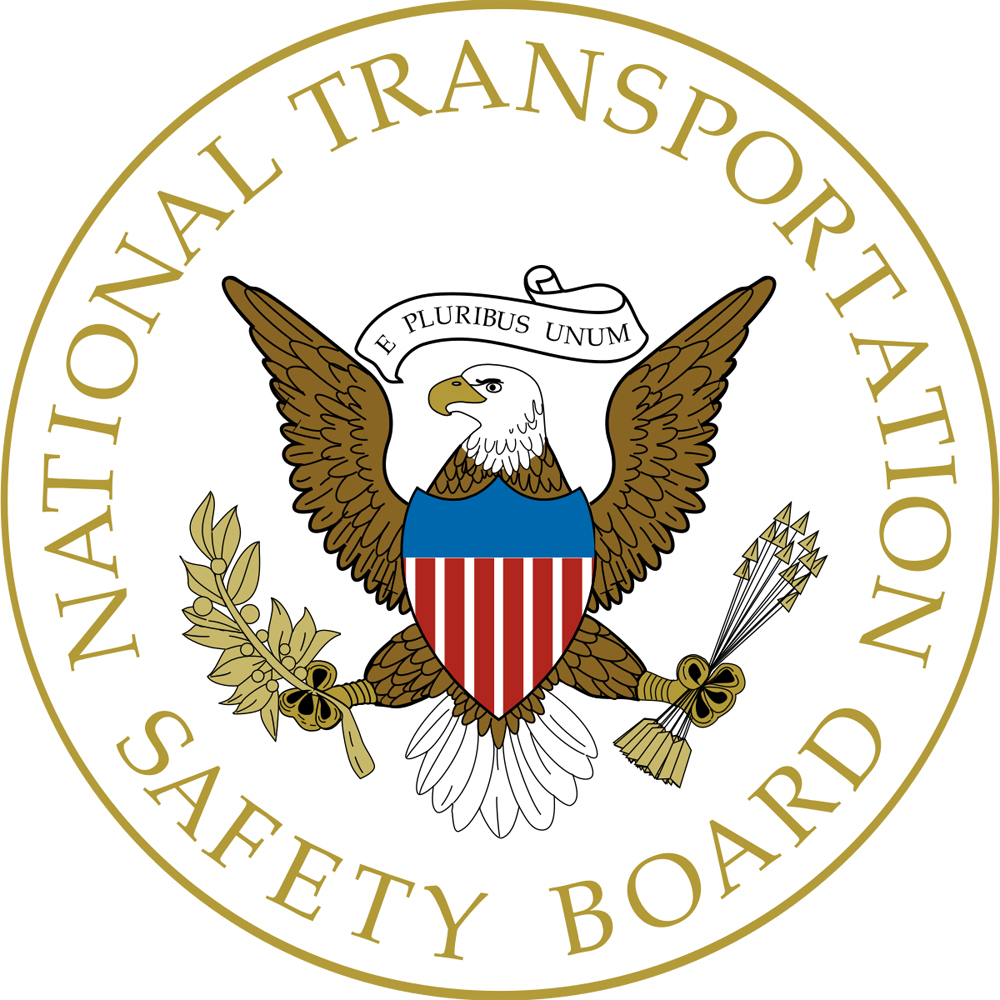This heavy 2-10-2 Santa Fe type was the largest rigid-frame standard locomotive designed by the United States Railroad Administration (USRA) while the government controlled the nation’s railroads during World War I. The USRA heavy 2-10-2 was a powerful drag freight engine in an era when pulling power was more important than speed.
A total of 175 USRA 2-10-2s were built in 1919 and assigned to the Pennsylvania RR (130 locomotives), Erie (25), Chicago, Burlington & Quincy (10), Colorado & Southern (5), and Bessemer & Lake Erie (5).
After the war, additional copies of the 2-10-2 design were built for the Illinois Central (125 locomotives), Atlantic Coast Line (20), Central of Georgia (10), and Missouri Pacific (10).
The Walthers 2-10-2 is an excellent replica that matches the dimensions shown in the drawings of the USRA heavy 2-10-2 published in the 1922 edition of the Simmons-Boardman Locomotive Cyclopedia. It has the correct scale 63″ drivers and a 22′-9″ driving wheelbase which has been stretched about a scale inch between each of the driver sets (5″ total). The overall locomotive wheelbase is correct, although the lead and trailing truck wheel diameters are a scale 3″ undersize for clearance purposes.
New mechanism. This model has an interesting new mechanism that has a die-cast frame with a tall gearbox riding above the rear drivers. The gearbox powers the rear set of drivers, and the rigid metal side rods transfer the motion forward to the other four sets of drivers. The mechanism has either Southern or Baker valve gear, depending upon the model’s specific prototype.
A can motor with a pair of brass flywheels is mounted inside the boiler between the die-cast weights. A universal coupling connects the motor to the top of the gearbox, and everything is concealed within the firebox. This arrangement leaves a realistic open space between the boiler and chassis.
Eight of the drivers and all eight tender wheels pick up current. Each driver is insulated from its axle, so sets of tiny contacts collect current from the backs of the wheels.
The metal RP-25 contour wheelsets have been chemically blackened, and they match the National Model Railroad Association standards gauge. All of the drivers have flanges and some lateral motion. Minimal lateral motion in the end drivers keeps the locomotive centered over the rails. However, the middle drivers can shift about 3/32″ to either side of center, and they have long crankpins, so the model can negotiate tighter curves than you’d expect.
The USRA cab is a separate casting with excellent window detail. It includes an interior with two seats, backhead details, and gauges that have pad-printed faces.
Our 2-10-2s came smoothly painted black with a light or dark graphite finish on the smokebox and firebox. The lettering was sharp, and the models include the proper builder’s plates mounted on the smokebox sides – Baldwin on the C&S model and Lima’s diamond plate on the IC engine.
The tender. A USRA standard long tender is provided, and it rides on four-wheel Andrews trucks with safety chains. The dual-mode QSI sound decoder is concealed inside, with a pair of speakers facing down over openings in the die-cast floor.
The acetal plastic tender trucks aren’t sprung, but they do equalize. Each wheelset consists of a tubular axle that holds a pair of wheels mounted on stub axles. Concealed electrical contacts pick up current from all eight tender wheels.
Proto 2000 magnetic knuckle couplers are mounted at the proper height on the engine and tender.
Electronic system. The QSI Q1a Quantum sound system is a full-function dual-mode DCC sound decoder. It delivers excellent steam sounds, properly timed with four chuffs per driver revolution, and bright white directional headlights.
The model includes QSI’s Quantum Analog Remote Control (QARC) system so DC users may operate and program many sound system functions using a QARC controller (not included) that can be added to most DC power packs.
A 31-page operating manual explains the QSI system’s operating and adjustment procedures. The system uses 12 DCC function keys to activate the decoder’s sounds and turn the lights on or off. All of the sounds have individual volume adjustments in both control modes.
If activated, verbal confirmations report the current CV setting after a change is made. In case of a user programming error, a magnetic wand is provided to reset everything to the original factory default settings.
The DCC performance was similar, except for having a slightly higher top speed since our test system delivers 14.5 volts of track current. Our samples started moving on throttle step 1 at 1 mph, reached 31 mph on step 14, and had a top speed of 73 mph on step 28. You can adjust the model’s throttle performance in DCC, including starting voltage, maximum voltage, and acceleration, by setting configuration variables (CVs) 2, 3, 4, and 5.
The prototype USRA heavy 2-10-2s spent most of their careers hauling immense tonnages in the 20 to 30 mph range. These impressive-looking models can easily reproduce this performance, especially on large-radius curves, and they’ll sound great doing the job.
Price: with sound and DCC, $425; DC-only version, $325
Manufacturer
Life-Like Products Division of
Wm. K. Walthers, Inc.
P.O. Box 3039
Milwaukee, WI 53201
www.walthers.com
Description: Plastic and metal ready-to-run steam locomotive with dual-mode sound
Road names: (two engine numbers with sound and DCC, one DC engine number). Engines with Southern valve gear: Bessemer & Lake Erie; Chicago, Burlington & Quincy; Colorado & Southern; Erie; Pennsylvania RR., painted and unlettered.
Engines with Baker valve gear: Illinois Central, painted and unlettered
Blackened nickel-silver RP-25 wheels, all correctly gauged
Drawbar pull: without traction tires, 3.7 ounces (52 cars on straight and level track); with traction tires, 200 cars
Dual flywheel drive
Dual-mode Digital Command Control (DCC) sound decoder
Engine weight: 18 ounces (23-1/2 ounces with tender)
Five-pole skew-wound motor
Magnetic knuckle couplers
Minimum radius: 18″
Overall length: 13″
16-wheel electrical pickup
Wire handrails





